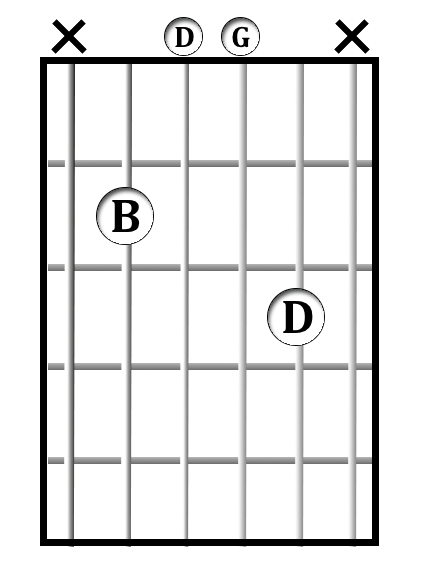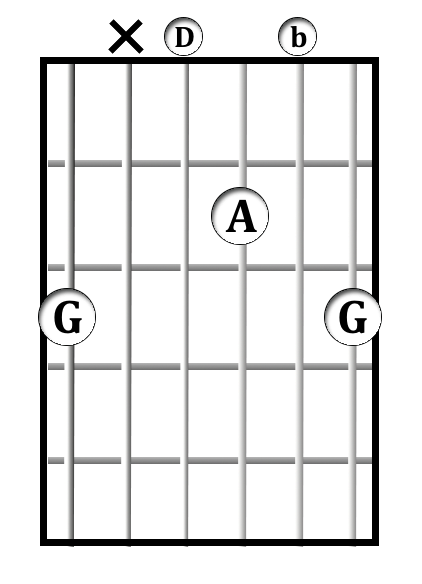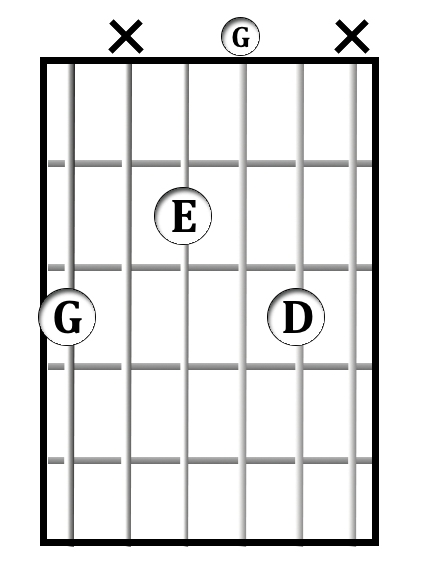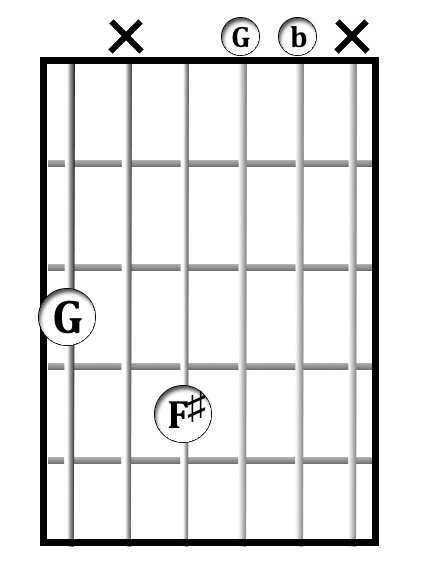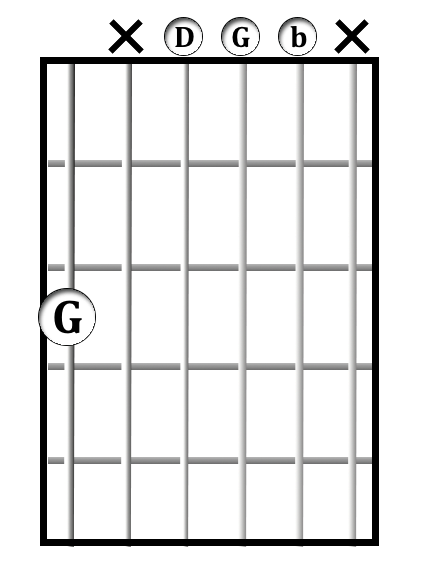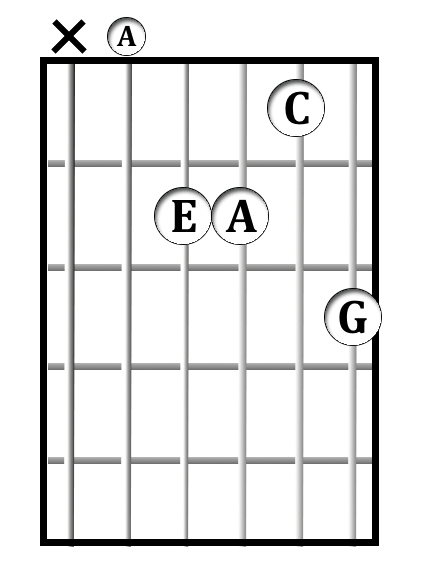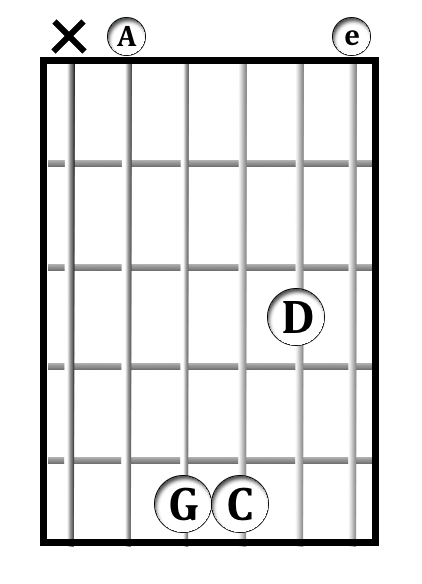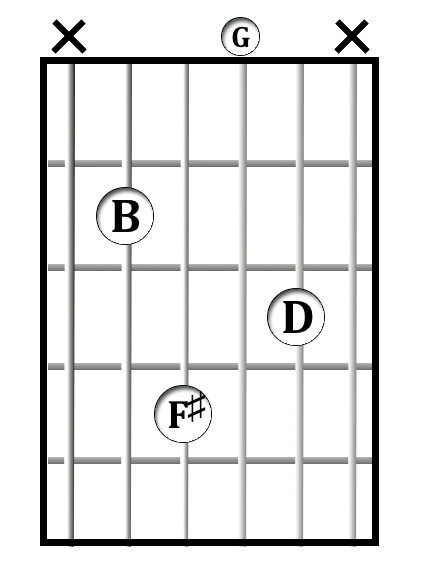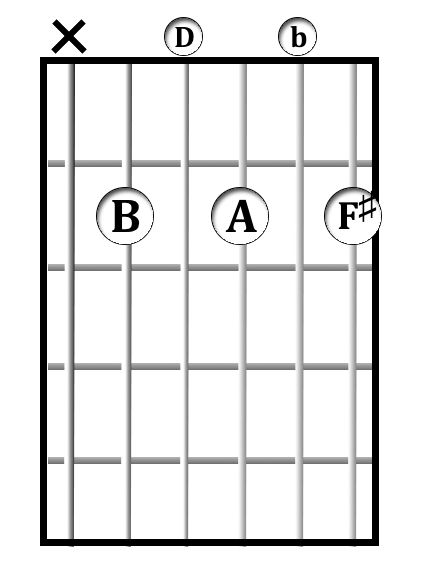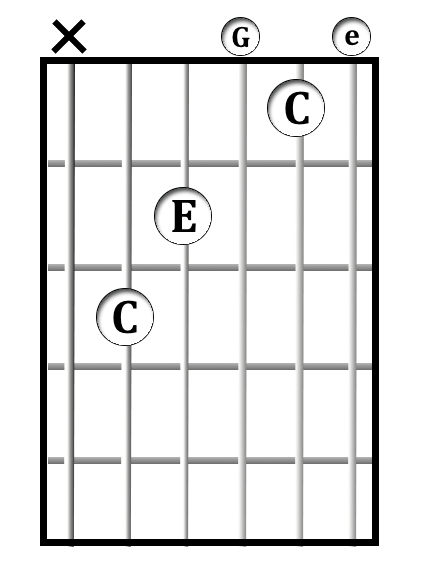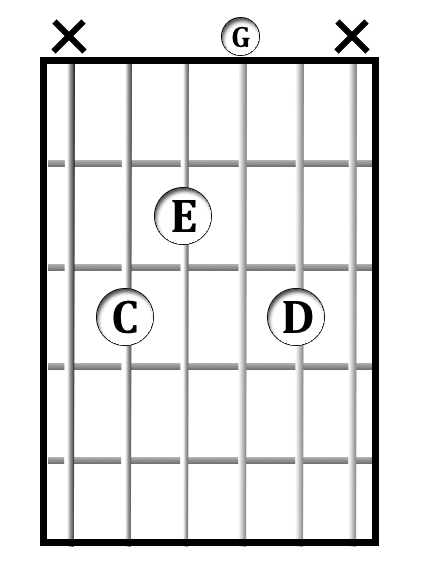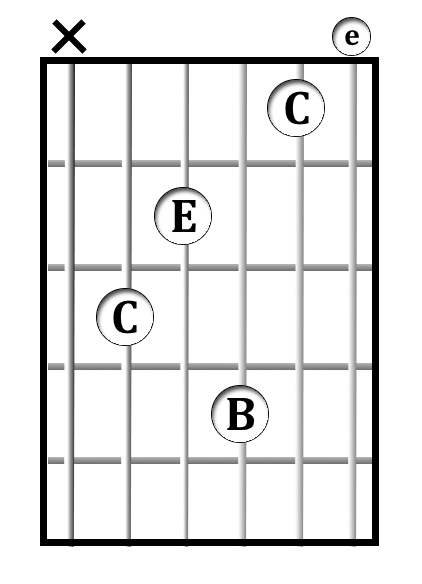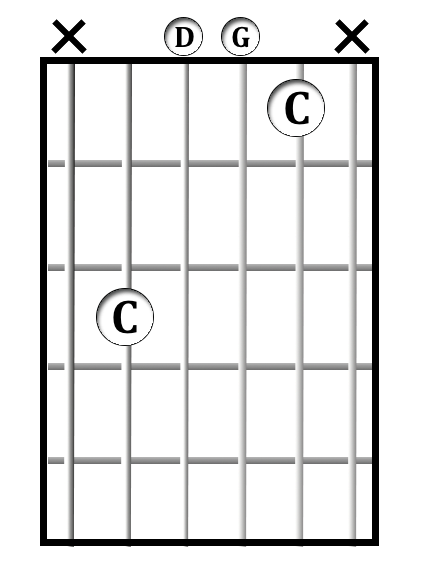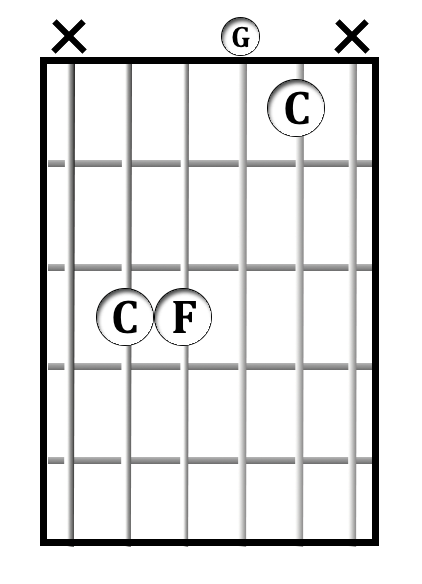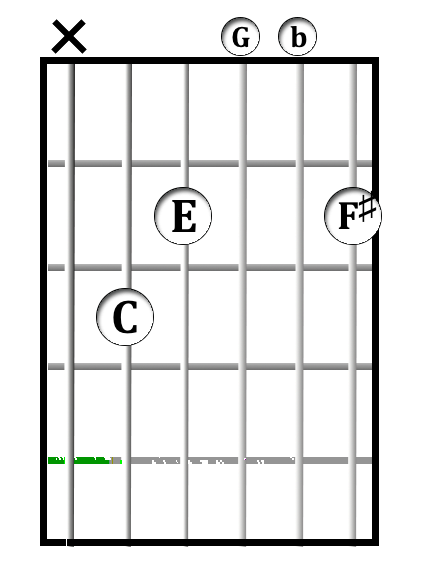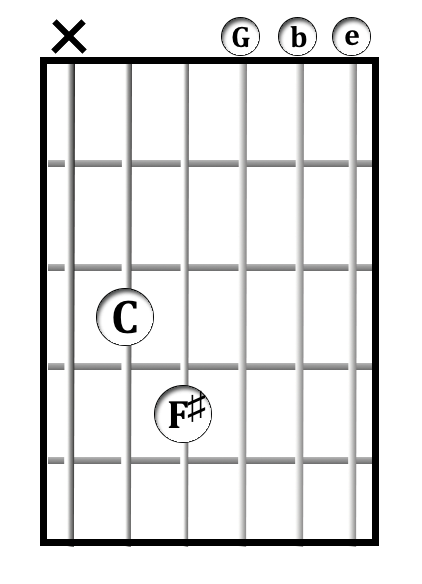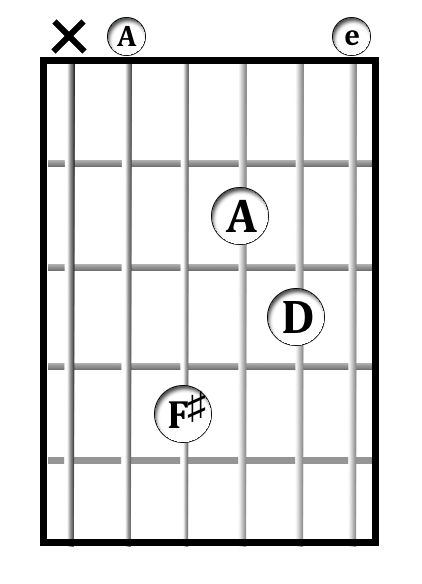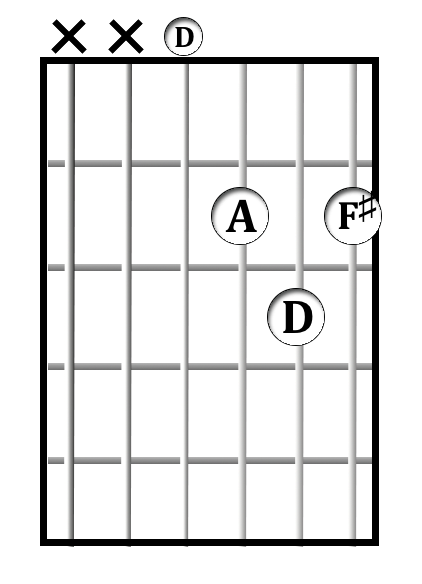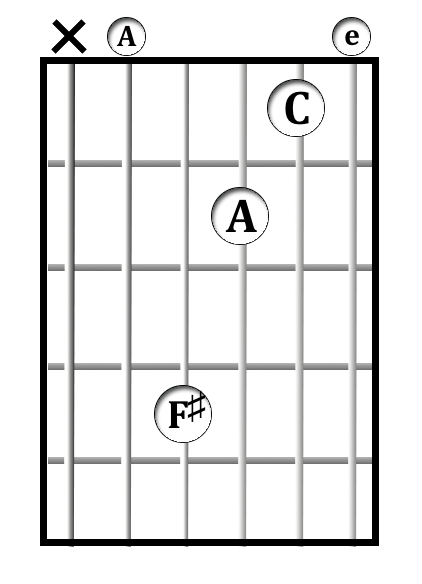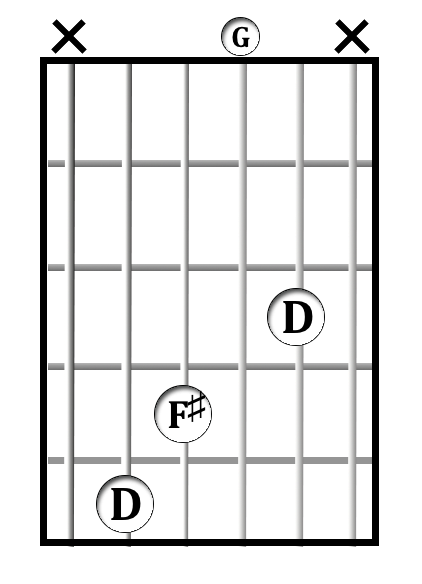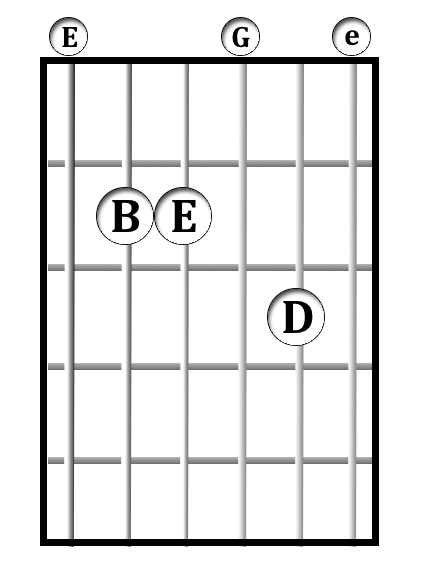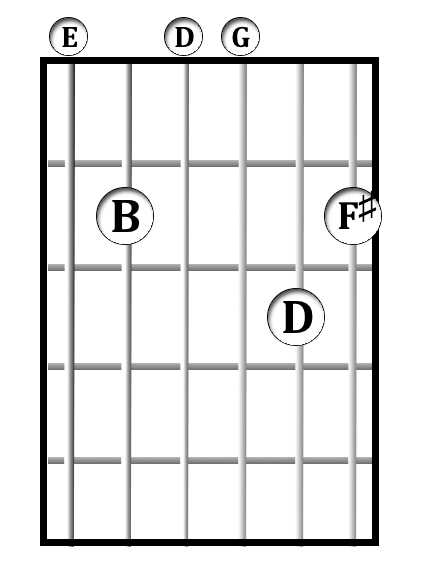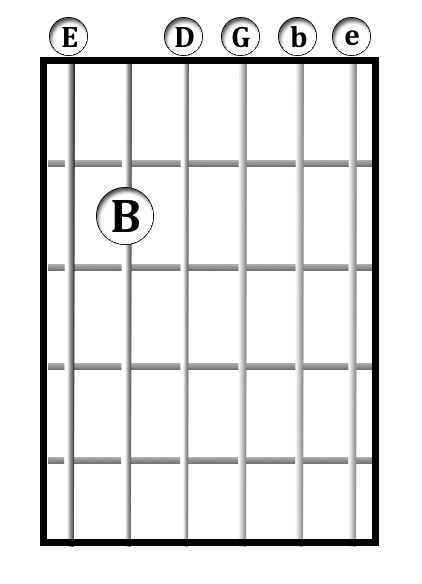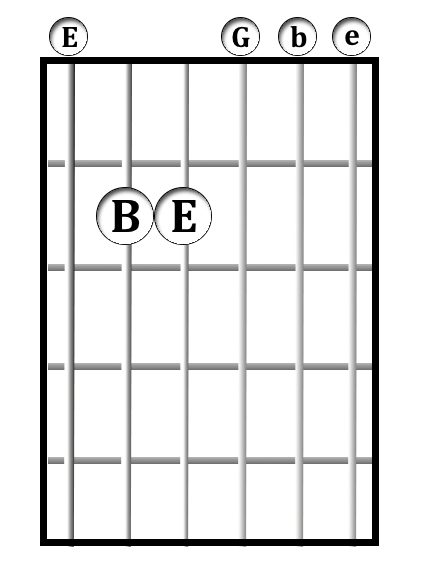Learn All Open Chords in G
In addition to the “standard” campfire chords you’ve already learned, every chord can be played with many subtle variations.
Some of these variations are described here.
The role of the capo
Learning these chords will allow you to play most songs in G major with a great deal of flexibility, enabling you to create much more interesting chord progressions than would be possible by merely using the same standard voicingThe choice of how to arrange the notes of a chord; what order they are in, whether any notes are doubled, and what octave each note appears in.s over and over again. And by adding a capo, you can enjoy a similar level of fluency in other keys.
| Capo Position | Original Key | Convert to Key Of |
| I | G | G♯ |
| II | G | A |
| III | G | B♭ |
| IV | G | B |
| V | G | C |
Chord Inversions
One variation is to create an inversionA chord whose root note is not in the bass layer, with another chord tone put there instead. Normally, a C major chord has a C in the bass. If E or G appear in the bass, this is an inversion. of the chord by putting an alternative note in the bass. Normally the rootThe basic note of a key, chord, or scale; the note which acts as the center and to which all other notes are compared. note is in the bass, so putting the 3rd or the 5th in the bass would be an inversion.
Chord Color Tones
Chords may be made more colorful by adding other notes from the key, so long as those notes also sound pleasant within the chord’s own harmony. For instance, in the key of G, the note A does not normally belong in the G major chord. But it can be added for color.
The amount of color this tone adds is subject to the length of the colorful note, its overall volume, the way you pluck the string that it is played on, and perhaps most importantly of all the position the colorful note has within a chord. Each of these factors affects the level of emphasis you give to a colorful note.
Adding this “A” note by plucking it very softly in a way where it rests somewhere in the middle of the chord voicing, and then almost immediately resolveWhen a note moves to another note a step away, especially when the destination is one that the listener was expecting to hear.s back down to “G” (a correct note of the chord) will sound quite tasteful. Putting this note in the bass, or playing it loudly or as a very high note will add much more emphasis—and this emphasis may not be wanted if all you are trying to do is add a modest bit of color to an otherwise standard chord.
In the key of G major, there are fundamentally 6 different commonly-used chords. You may decorate them each in many subtle ways to add variety to your playing.
| Chord Name | Chord Function | Chord Notes | Optional Notes |
| G | I major (tonic) | G, B, D | A, E, F♯ |
| A- | II minor (subdominant) | A, C, E | B, D, G |
| B- | III minor (tonic) | B, D, F♯, A | E |
| C | IV major (subdominant) | C, E, G | D, F♯, A, B |
| D | V major (dominant) | D, F♯, A | E, B, C |
| E- | VI minor (tonic) | E, G, B | F♯, A, D |
The Chords
I Major
II Minor
III Minor
IV Major
Cmaj7(9, ♯11)
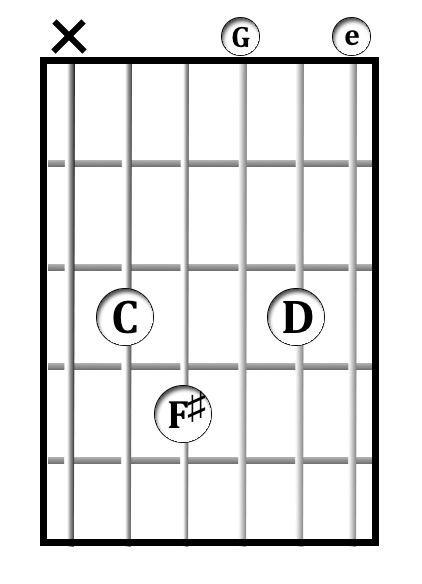
V Major
VI Minor
Key Tasks
- Study all of the chords above; ask yourself why each of the chords is named the way it is.
- Play through some of your favorite chord progressions from your favorite song(s) using these new chords. In most cases, you can substitute most of the “I” chords for any other “I” chord. There are exceptions, but in general, you can experiment with interchanging these chords freely.
- Example chord progressions to try: I, IV, V, I; VI-, I, V, VI-
 As the creator of Hub Guitar, Grey has compiled hundreds of guitar lessons, written several books, and filmed hundreds of video lessons. He teaches private lessons in his Boston studio, as well as via video chat through TakeLessons.
As the creator of Hub Guitar, Grey has compiled hundreds of guitar lessons, written several books, and filmed hundreds of video lessons. He teaches private lessons in his Boston studio, as well as via video chat through TakeLessons.